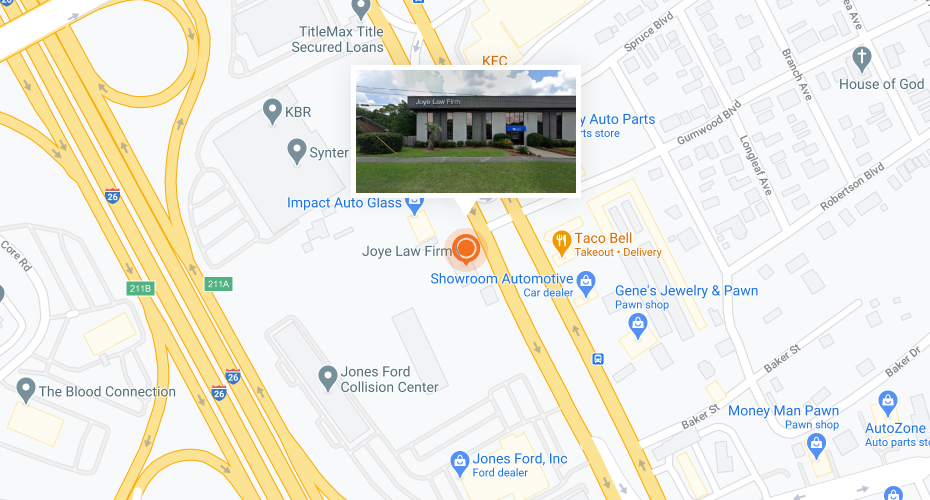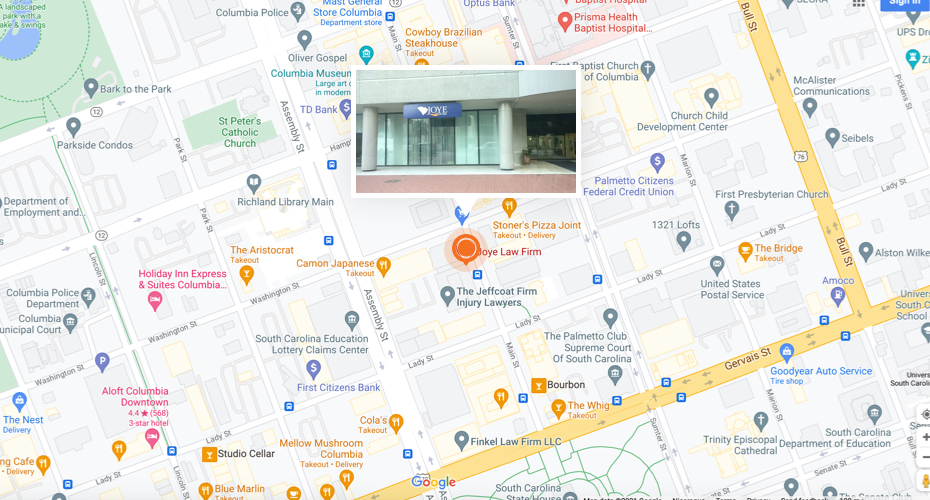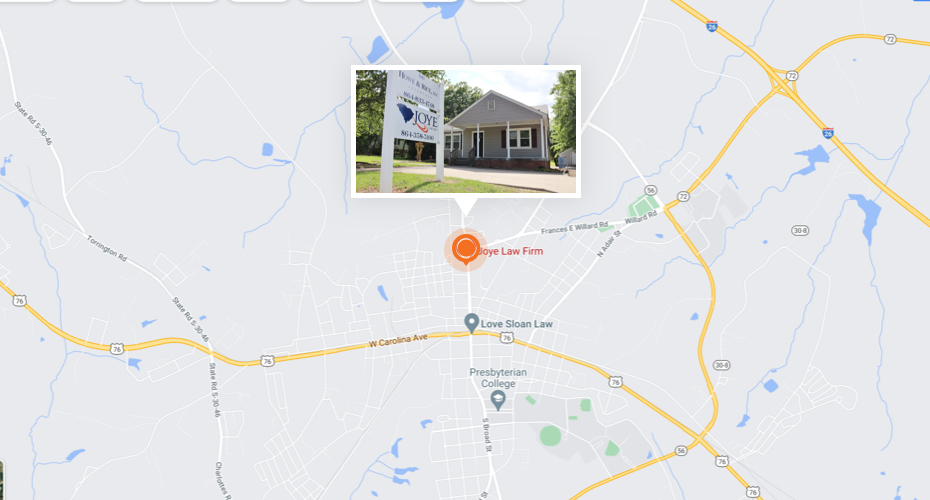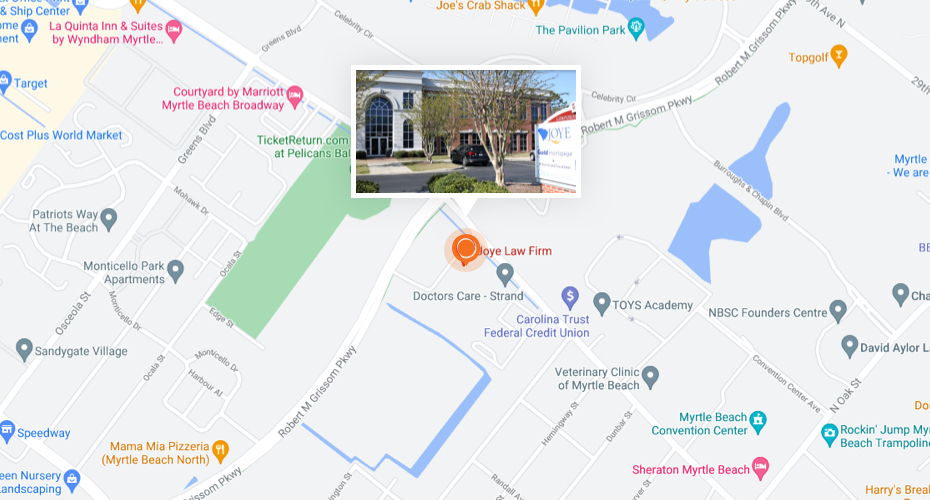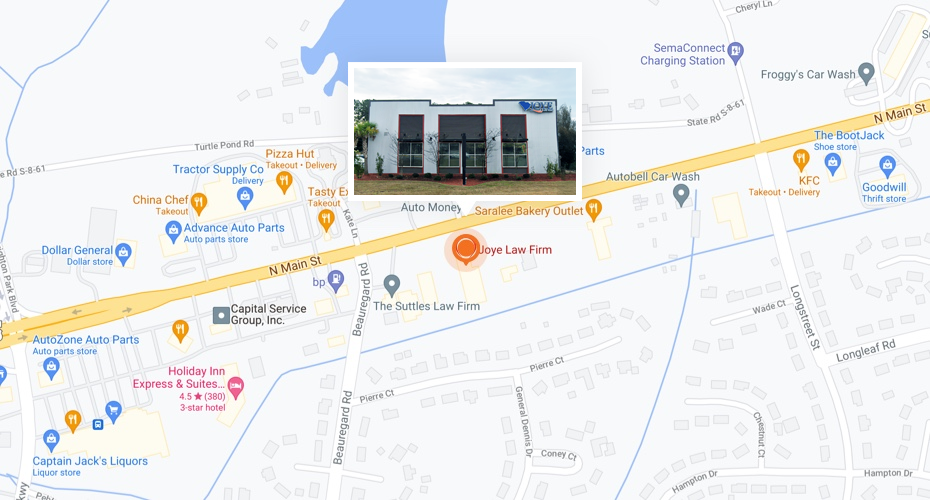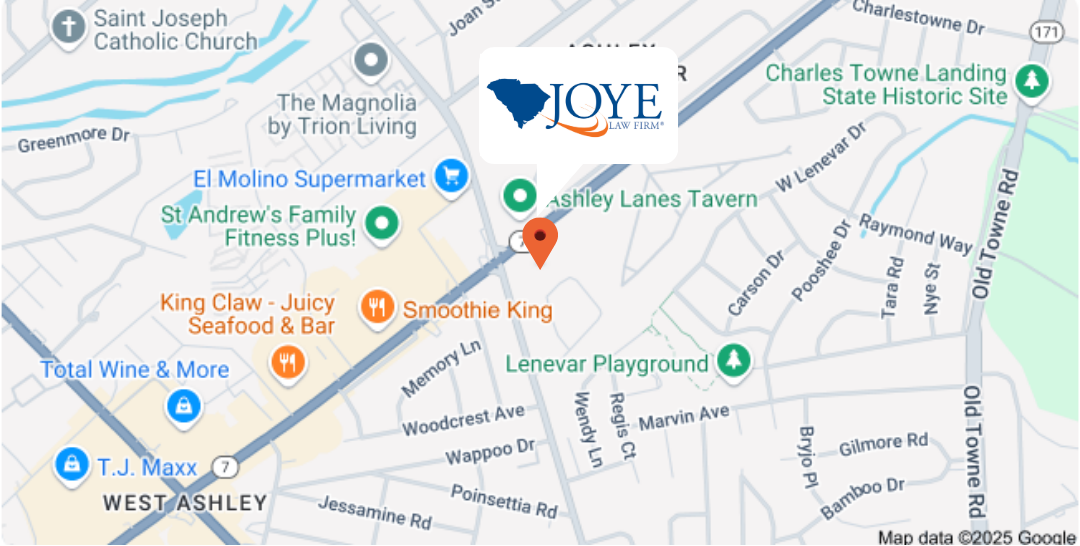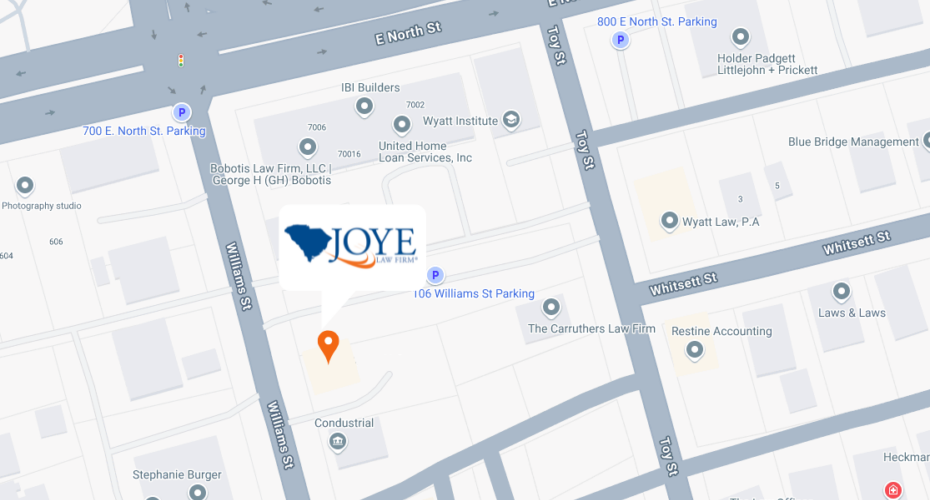
If you’ve suffered a neck or back injury in an accident, the most important thing to understand is that any spinal column injury is a serious matter. Back and neck injuries can cause outcomes from chronic pain to paralysis and be life-altering.
Because back and neck pain are also symptoms of aging, it is common for insurers to try to dismiss an accident claim for back or neck pain. After an accident that has caused a back or neck injury, you may have to fight to substantiate the fact that your injury is real and was caused by someone else’s carelessness. After a catastrophic back or neck injury, you will likely have to fight the insurance company for a settlement that reflects the full amount of money you deserve.
Joye Law Firm can help if you have suffered a significant back or neck injury in an accident that was not your fault. Our South Carolina personal injury lawyers fight for people with neck and back injuries that have occurred in car accidents, motorcycle accidents, falls, and work accidents. Let us help you, too.
Since 1968, our attorneys have helped injured people throughout South Carolina recover the compensation needed to rebuild their lives after serious back or neck injuries. Our lawyers and staff will handle your case with respect, compassion and care.
Call Joye Law Firm. You can reach us at (888) 324-3100 or through our online form for a free review of your legal options.
Neck and Back Injuries Change Accident Victims’ Lives
The American Academy of Orthopaedic Surgeons (AAOS) says lumbar/low back pain and cervical/neck pain are among the most common physical conditions affecting an individual’s ability to work and manage the daily activities of life. Back pain is also the most common physical condition for which patients visit their doctors.
The AAOS says that 20% of people who suffer from either low back or neck pain report they cannot work, while 33% of people with back pain in multiple sites are unable to work. Back pain also greatly limits the type and duration of work a person can do. Three out of four people with multiple back pain sites report work limitations. A person who sustains a back or neck injury due to another’s negligence may file a personal injury lawsuit and seek compensation for lost income and future lost earning potential, pain and suffering and other harm suffered.
The neck and back are complex structures of bones, joints, ligaments and muscle. Pain not caused by disease or congenital deformity is likely due to sprained ligaments, strained muscles, ruptured discs, irritated nerves and/or fractured vertebrae.
The 24 vertebrae of the spine run the length of your neck and back and protect your spinal cord, the primary link between the brain and the body’s nervous system. Spinal discs between each vertebra act as shock absorbers and allow flexibility. A tear in the spinal cord can cause loss of sensation and mobility. Pressure on the spinal cord due to a ruptured or bulging disc can cause radiating pain into your limbs and impair mobility.
A direct blow, sudden jolt or twisting of your back or neck can strain or tear a muscle, tendons or ligaments, rupture spinal discs, fracture vertebra or tear the spinal cord.
Common accidents that lead to back and neck injuries include:
- Slips, trips and falls
- Motor vehicle accidents, including pedestrian accidents and bicycle accidents
- Sports and playground accidents
- Violence, including gunshots
- Being hit by objects, materials, tools, debris, etc.
- Being slammed against a structure or object
- Being trapped between structures or objects, such as a falling/closing garage door or hydraulic lift
A neck or back injury might be diagnosed as:
- Cervical (neck) or lower (lumbar) back sprain or strain (muscle, tendon or ligament strain)
- Bulging, herniated, torn or slipped discs
- Pinched nerves
- Compressed nerve roots at the end of the spinal cord, known as cauda equina syndrome
- Fracture or dislocation of the spine (vertebrae)
- Spinal cord damage (paralysis).
Back and neck injuries can limit mobility. A spinal cord injury may cause paralysis, which is an incurable disability. Treatment for back and neck injuries may range from over-the-counter or prescription pain medication, to bed rest, physical therapy, transcutaneous electrical nerve stimulation (TENS), steroid injections and surgery.
Whiplash Neck Injuries and Car Accidents
 Whiplash may be the most well-known neck injury. It is caused by abrupt hyperextension, when the neck bends beyond its normal range of motion. The term “whiplash” comes from comparing the suddenness of the neck’s back-and-forth movement to a cracking whip and describes a variety of neck injuries.
Whiplash may be the most well-known neck injury. It is caused by abrupt hyperextension, when the neck bends beyond its normal range of motion. The term “whiplash” comes from comparing the suddenness of the neck’s back-and-forth movement to a cracking whip and describes a variety of neck injuries.
The formal diagnosis may be:
- Cervical strain or sprain
- Herniated disk
- Vertebral body fracture.
There is also a grading system for whiplash, which may be a part of the diagnosis:
- Grade 0: No complaints about the neck. No physical signs.
- Grade I: Neck complaint of pain, stiffness or tenderness only. No physical signs.
- Grade II: Neck complaint and musculoskeletal signs such as decreased range of motion and point tenderness.
- Grade III: Neck complaint and neurological signs. Neurological signs include decreased or absent deep tendon reflexes, weakness, and sensory deficits.
- Grade IV: Neck complaint and fracture or dislocation.
Any accident that shakes or jolts your head and neck can cause a whiplash-like neck injury. In some instances, it can also cause a brain injury. Rear-end car accidents are the most common cause of whiplash. In most rear-end car accidents, the driver of the car behind is considered at fault for failure to slow or stop in time to avoid a collision.
Most often, a person experiences whiplash symptoms within 24 hours of the accident.
They are most likely to include:
- Neck pain
- Headache
- Stiffness or increased pain when flexing your neck or turning your head.
If your whiplash includes nerve damage, you may also suffer from dizziness and ringing in the ears, as well as headaches. Pain or numbness may radiate to one or both arms.
Most whiplash victims fully recover in a couple of months. However, some people suffer symptoms for months or even years. Some victims develop chronic pain that requires pain medication and/or muscle relaxers that can diminish their physical and cognitive abilities or other senses. Physical therapy may be prescribed to restore normal range of motion in the neck and a return to normal activities.
Paralysis From a Back or Neck Accident Injury
When the spinal cord is damaged, the loss of sensation or mobility is described as partial or complete. The loss of sensation occurs at and below the point of injury along the spine. For example, a cervical spinal cord injury may cause loss of function in the shoulders and down throughout the rest of the body.
A partial spinal cord injury may leave some sensation and mobility below the injury. Full recovery from an incomplete spinal cord injury may be possible. But after a complete injury, the individual is permanently paralyzed, though some symptoms may be treatable.
Paralysis is typically described as:
- Paraplegia, affecting all or portions of the legs and/or pelvic organs from damage to the spinal cord from the base of the neck down to the abdomen, lower back, or bottom of the spine
- Tetraplegia (also “quadriplegia”), affecting the shoulders, trunk, arms, hands, legs and pelvic organs from a cervical spinal cord injury.
Symptoms that often accompany the loss of mobility and sensation include:
- Bowel and bladder dysfunction, which elevates the risk of urinary tract infection (UTI) and kidney infection.
- Inability to regulate blood pressure and circulation, which elevates the risk of blood clots, such as deep vein thrombosis (DVT) or a pulmonary embolus, either of which can be fatal.
- Inability to regulate respiration, elevating the risk of pneumonia.
- Sexual dysfunction, including loss of fertility.
- Depression over diminished quality of life.
The National Spinal Cord Injury Statistical Center (NSCISC) says the lifetime costs of health care and living expenses for a person with paralysis from a spinal cord injury range from $1.2 million for a 50-year-old with “motor function at any level” to $5.1 million for a 25-year-old with high-cervical tetraplegia.
Contact a Neck and Back Injury Lawyer for Help
If you have suffered a serious back or neck injury in an accident in South Carolina that was not your fault, you will need to explore all possible sources of financial support to rebuild your life. You may have a right to file a personal injury lawsuit against whoever caused your back or neck injury. We can also provide input on when you should consider applying for Social Security disability benefits.
You can rely on our attorneys to push aggressively to recover full compensation for your costs and losses. The attorneys of Joye Law Firm have more than 250 years of combined experience fighting for the rights of accident victims in South Carolina. We are proud of our track record of success. We can help you, too
Call Joye Law Firm at 877-941-1019 or fill out our online case evaluation form today for a free, no-obligation legal consultation about how we can assist you.

























